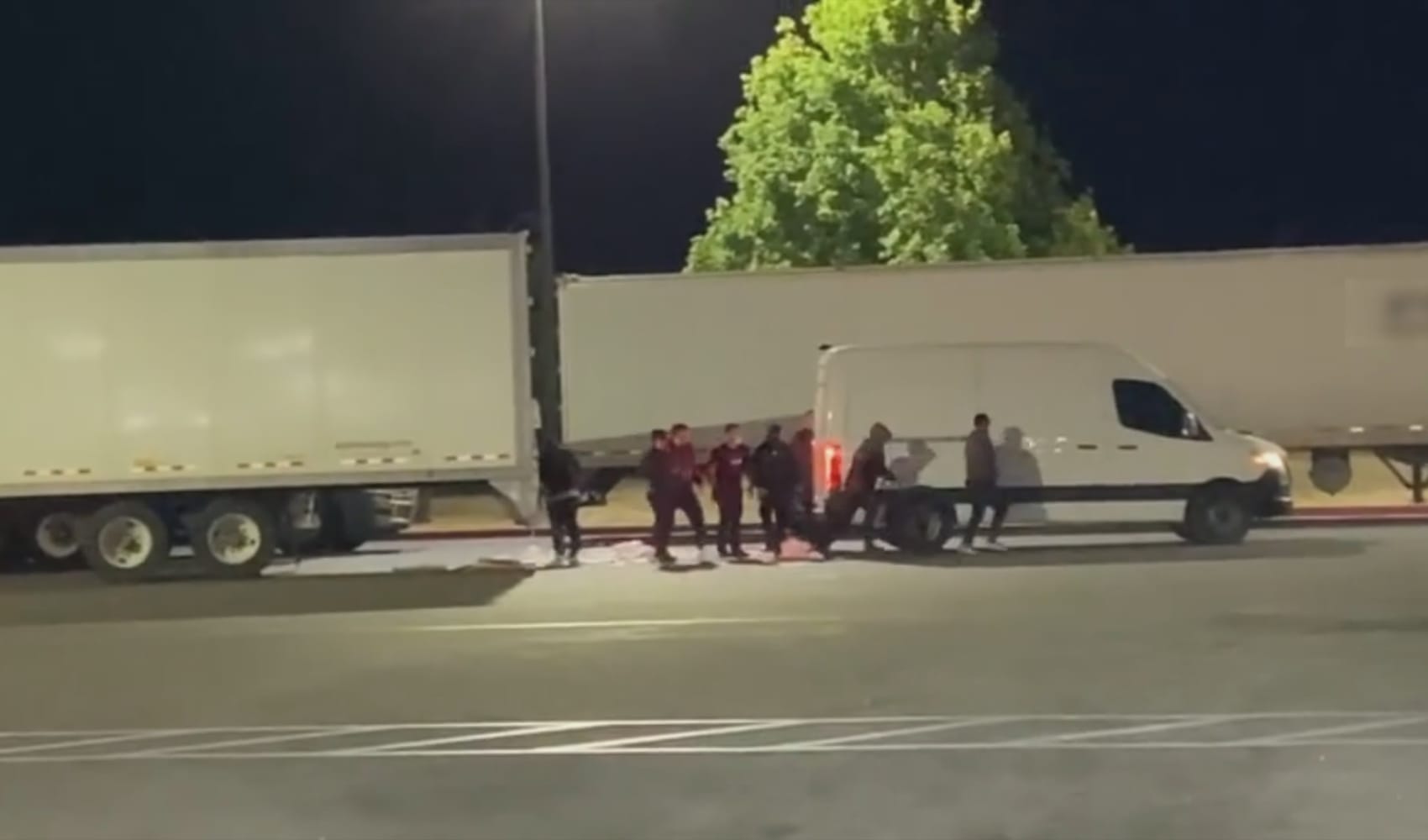Cargo Theft Crisis: Securing the US Supply Chain
Supply Chain Under Siege: Cargo Theft Reaches Alarming Heights
Introduction: The Invisible Threat Plaguing American Commerce
Ever wonder where that package you ordered online really goes after it leaves the warehouse? America’s supply chain, the complex network that brings goods from manufacturers to our doorsteps, is facing a growing and often unseen threat: cargo theft. We’re not talking about petty shoplifting; this is organized crime on a grand scale, and it's hitting businesses and consumers hard.
A Billion-Dollar Black Hole: The Cost of Cargo Theft
Numerous experts who spoke to CNBC estimate losses are close to $1 billion or more a year. Imagine that: a billion dollars vanishing into thin air, or rather, into the hands of sophisticated criminal networks. Think of it as a hidden tax on everything we buy, from electronics to food. Where is all this money going?
Modern Pirates: Exploiting Technology for Criminal Gain
It's a high-tech twist on an old crime. Criminal networks, both in the U.S. and abroad, are exploiting the very technologies designed to improve supply chain efficiency. They're using tracking data, logistics software, and other tools to pinpoint valuable shipments and coordinate their heists with alarming precision. Think of it like this: the criminals are using the map to find the treasure.
The Anatomy of a Cargo Theft: How It Happens
The Target: High-Value Goods
What are these modern pirates after? Generally, they target high-value, easily resold goods. Electronics, pharmaceuticals, alcohol, and even food products are prime targets. Anything that can be quickly turned into cash on the black market is fair game.
The Method: Diversion, Deception, and Muscle
The methods vary, but often involve a combination of diversion, deception, and, when necessary, force. Trucks might be hijacked on the road, warehouses broken into, or entire trailers stolen from parking lots. Sometimes it is as simple as impersonating the driver and picking up the load.
The Network: Organized Crime at Play
This isn't the work of amateur thieves. Cargo theft is often orchestrated by highly organized criminal groups with intricate networks, sophisticated planning, and international connections. This requires planning, coordination, and resources – it is not a crime of opportunity.
Cargo Brokers on the Front Lines: Fighting Back Against Theft
Cargo brokers of all sizes are working to address the rise in theft. They are investing in advanced security measures, enhancing background checks on drivers, and collaborating with law enforcement to track stolen goods and identify criminal networks. They are the gatekeepers of the supply chain, and their vigilance is crucial.
Law Enforcement Responds: A Constant Game of Cat and Mouse
Law enforcement agencies at the federal, state, and local levels are actively investigating cargo theft and working to dismantle the criminal organizations behind it. But it's a constant game of cat and mouse, as criminals are always adapting and finding new ways to exploit vulnerabilities in the supply chain. It's like trying to plug a leaky dam – as soon as one hole is patched, another appears.
The Role of Technology: Security vs. Vulnerability
Tracking and Monitoring: A Double-Edged Sword
While technology can be used to improve supply chain security, it can also be exploited by criminals. Tracking devices and logistics software can provide valuable information to thieves if they can gain access to the data. It is a double-edged sword and must be used carefully.
Cybersecurity: Protecting Sensitive Data
Cybersecurity is paramount in preventing cargo theft. Criminals often target companies' computer systems to gain access to shipping manifests, tracking data, and other sensitive information. Strong cybersecurity measures are essential to protect against these types of attacks. It is like protecting the key to the kingdom.
Insurance and Risk Management: Mitigating the Damage
Companies need to have comprehensive insurance coverage to protect against cargo theft losses. They should also implement robust risk management strategies to identify and mitigate potential vulnerabilities in their supply chains. Don't be caught without a safety net. A good risk management strategy will save money in the long run.
The Impact on Consumers: Paying the Price for Crime
Ultimately, consumers bear the cost of cargo theft. When goods are stolen, businesses must absorb the losses, which often leads to higher prices for consumers. Cargo theft also disrupts supply chains, leading to delays and shortages of certain products. You might not realize it, but this crime affects your wallet.
Best Practices for Supply Chain Security: Staying Ahead of the Curve
Enhanced Background Checks: Knowing Who You're Working With
Thorough background checks on drivers, warehouse employees, and other personnel are essential to prevent theft. It's important to know who you're entrusting with valuable goods.
Secure Facilities: Fortifying Warehouses and Trucking Yards
Investing in secure facilities with proper lighting, fencing, and surveillance systems can deter theft and make it more difficult for criminals to operate. Make sure your perimeter is secure, or your goods might walk out the door.
Collaboration and Information Sharing: Working Together to Fight Crime
Collaboration between businesses, law enforcement, and industry organizations is crucial to combat cargo theft. Sharing information about theft trends and best practices can help everyone stay ahead of the curve. There is power in numbers, and shared knowledge is strength.
The Future of Cargo Theft: An Evolving Threat
Cargo theft is an evolving threat, and businesses need to stay vigilant and adapt their security measures to keep pace with the latest criminal tactics. As technology advances, so will the sophistication of the thieves. Companies must keep up with the new threats to stay safe.
Conclusion: Protecting the Lifeline of American Commerce
Cargo theft is a serious and growing problem that poses a significant threat to the American supply chain. The estimated $1 billion annual loss is alarming, and the exploitation of technology by criminal networks is a cause for concern. By implementing best practices for supply chain security, collaborating with law enforcement, and staying ahead of the curve, businesses can protect their assets and help ensure the smooth flow of goods across the country. Ignoring this issue is like ignoring a slow leak in a ship – it will eventually sink you.
Frequently Asked Questions (FAQs)
What types of goods are most often stolen in cargo thefts?
High-value, easily resold goods such as electronics, pharmaceuticals, alcohol, food products, and clothing are frequently targeted. Anything with a high resale value on the black market is at risk.
How are cargo thefts typically carried out?
Methods include hijacking trucks, breaking into warehouses, stealing entire trailers, and using deceptive tactics to impersonate drivers and pick up loads. Sometimes, they even use inside information obtained through hacking or social engineering.
What can businesses do to protect themselves from cargo theft?
Businesses can implement enhanced background checks, invest in secure facilities, utilize advanced tracking and monitoring technologies, and collaborate with law enforcement and industry organizations to share information and best practices. Also, strong cybersecurity is crucial.
Who ultimately pays the price for cargo theft?
Ultimately, consumers bear the cost of cargo theft through higher prices and potential delays or shortages of goods. Businesses often pass on their losses to consumers to maintain profit margins.
What role does technology play in cargo theft prevention?
Technology can be a double-edged sword. While it can be used to improve security, it can also be exploited by criminals to gain access to sensitive information and track valuable shipments. Therefore, robust cybersecurity and careful implementation of security measures are essential.

